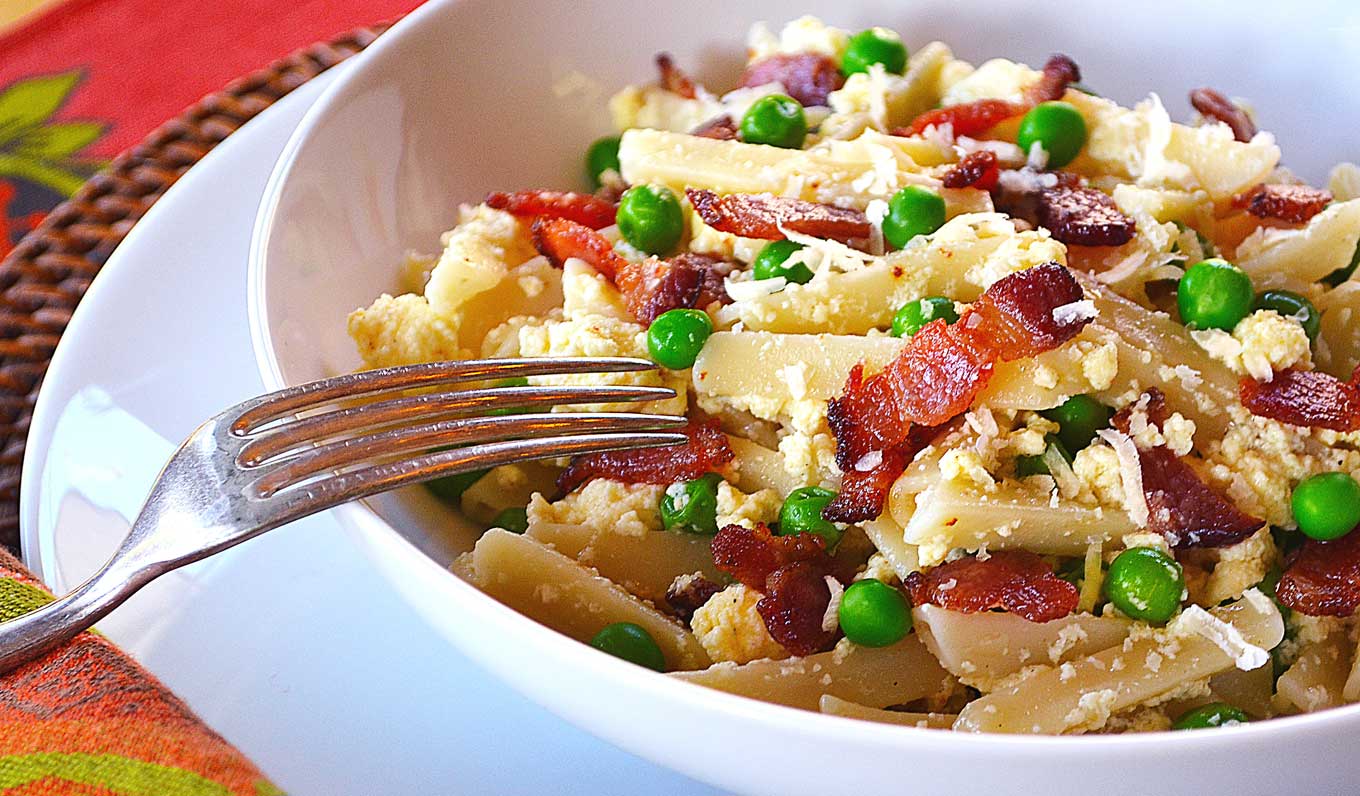
It’s not easy to impress my mom when it comes to culinary shenanigans, but I think I had such a moment with her the other day. You see, for years I watched this no-nonsense woman ‘whip up’ three course meals seemingly faster than it took my dad to call and say “Hey, honey, mind if I bring four colleagues home for dinner tonight?” The lady can expertly roast, braise, sauté, fry and bake as effortlessly as mere mortals approach a drive-through window. She’s been my invaluable source of food information since I first picked up a pot.
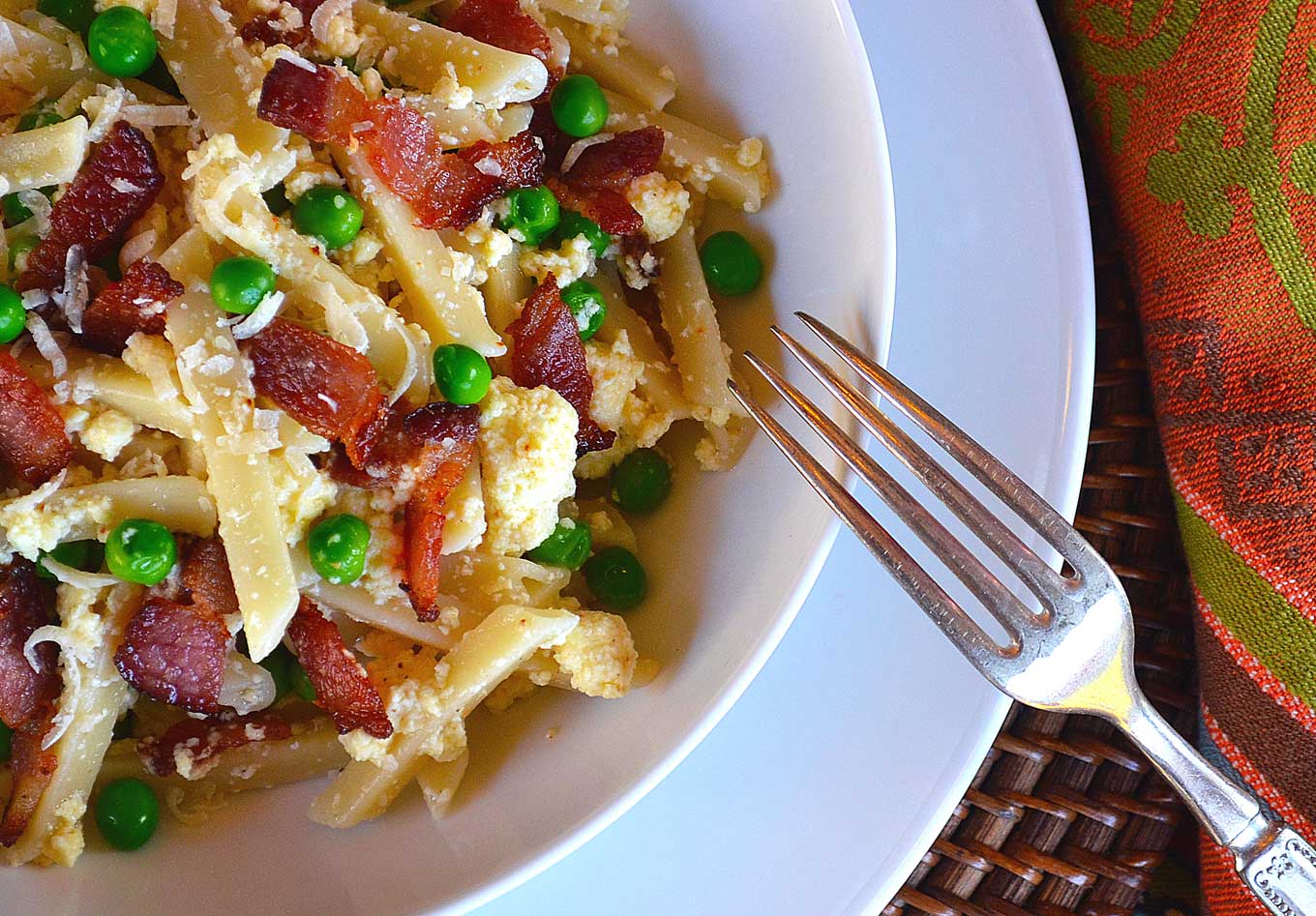
Yet there we were, on the phone, talking about – what else? – food and I happened to mention that I had made fresh ricotta for a particular dish. “You made it yourself?” she asked. I could feel her head tilting ever so slightly as her eyebrows arched towards the sky. After a few seconds of silence, she said in a congratulatory tone: “I’ve never made it myself. What did you use as your acid?”
She’s a good woman, my mom. She was too kind to note that she doesn’t need to make it. She lives in Italy and is within a stone’s throw of a supermarket and a delicatessen that sell ricotta to die for. But since I don’t live at the base of the Italian Alps, I either need to buy it in those plastic containers you find in the dairy section of most supermarkets or make it.
Mostly I’ve taken to making it because it’s a 20-minute project whose results easily beat the pants off its often rubbery and bland supermarket counterpart. It wins in creamy texture and milky taste, hands-down. Not that I don’t go to that well occasionally myself when in a pinch. Sometimes it is clearly more important to fulfill that whim, or downright need, for that bowl of pasta with ricotta, peas and bacon or that ricotta cake then to be all high and mighty about making everything from scratch, yes?
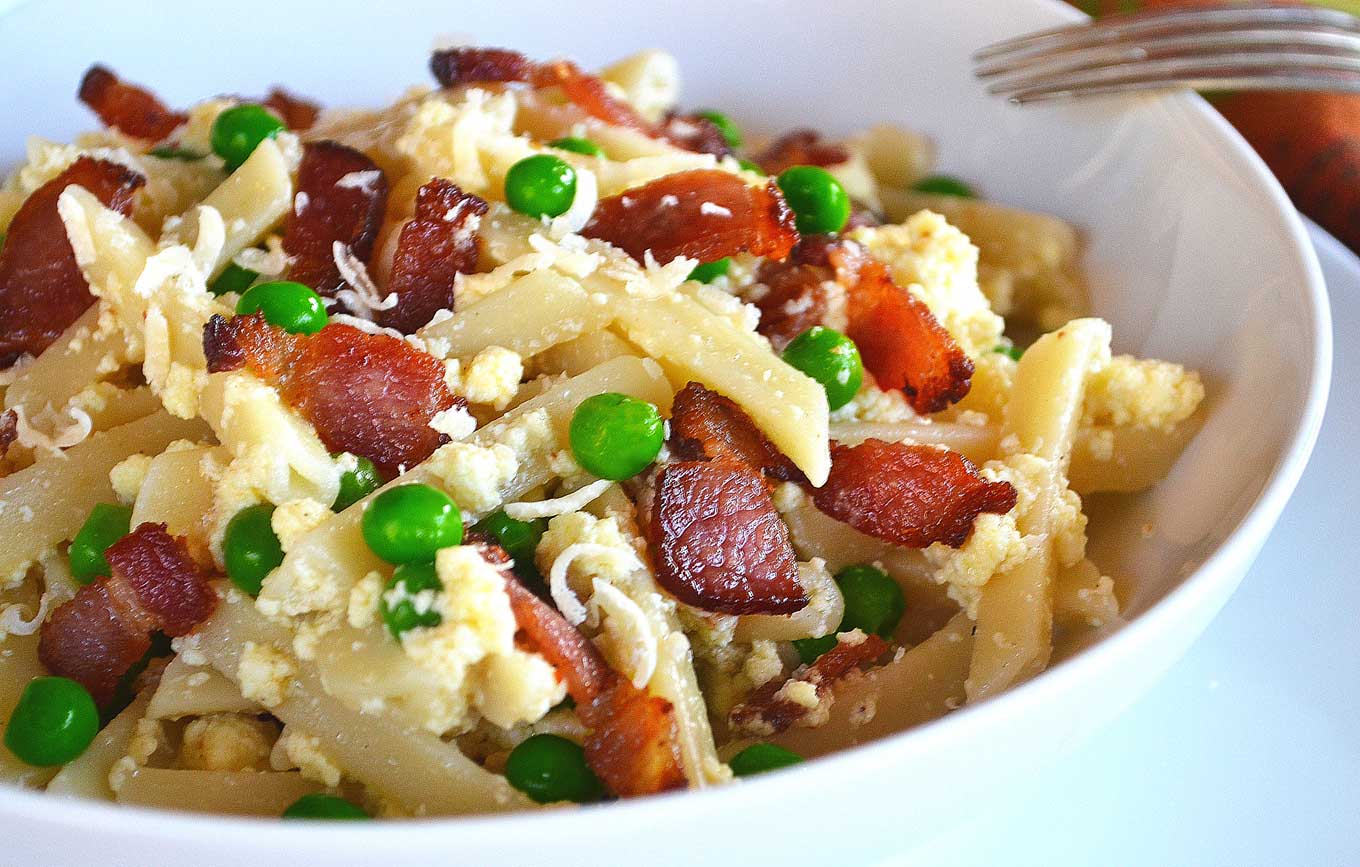
In addition to its superior and fresher taste, homemade ricotta also has another benefit. It allows you to steer clear of yummy-sounding stabilizers like xanthan gum, locust bean gum and guar gum, which can be found in just about all supermarket ricottas. Why are they in there? Because mass-market ricotta producers don’t take the time to drain the curds properly. Instead, they load their ricottas with these additives to keep the water – and their profits – from leaking out. In case you’ve been wondering where that rubbery texture comes from, now you know.
To honor all homemade ricotta purists out there, I will note that the ricotta I make at home is a fake. ‘Real’ ricotta is made by re-heating left-over whey that has been used to make other cheeses, which means the kind we make in our kitchens using just milk and an acid like vinegar or lemon juice is a wanna-be, a mere forgery. Hum bug. This ricotta may not be the real deal technically…but tell that to your taste buds.
Making this delicious little faker is easy too! Here’s how you do it.
And mom, should you decide to give homemade ricotta a try, feel free to call me with questions. Anytime.
making ricotta, peas & bacon pasta
Bring a large pot of water to a boil. Then add a generous handful of Kosher salt.
Add 3/4 lbs or 340 gr. of pasta of your choice to the boiling water and cook according to package instruction. Add 2 ½ cups (10 oz. or 285 gr.) of frozen peas three minutes before draining the pasta to allow them to heat through. Drain the pasta and peas very well.
Return to the pot. Add 1 ½ cups of store-bought or homemade whole milk ricotta and mix well.
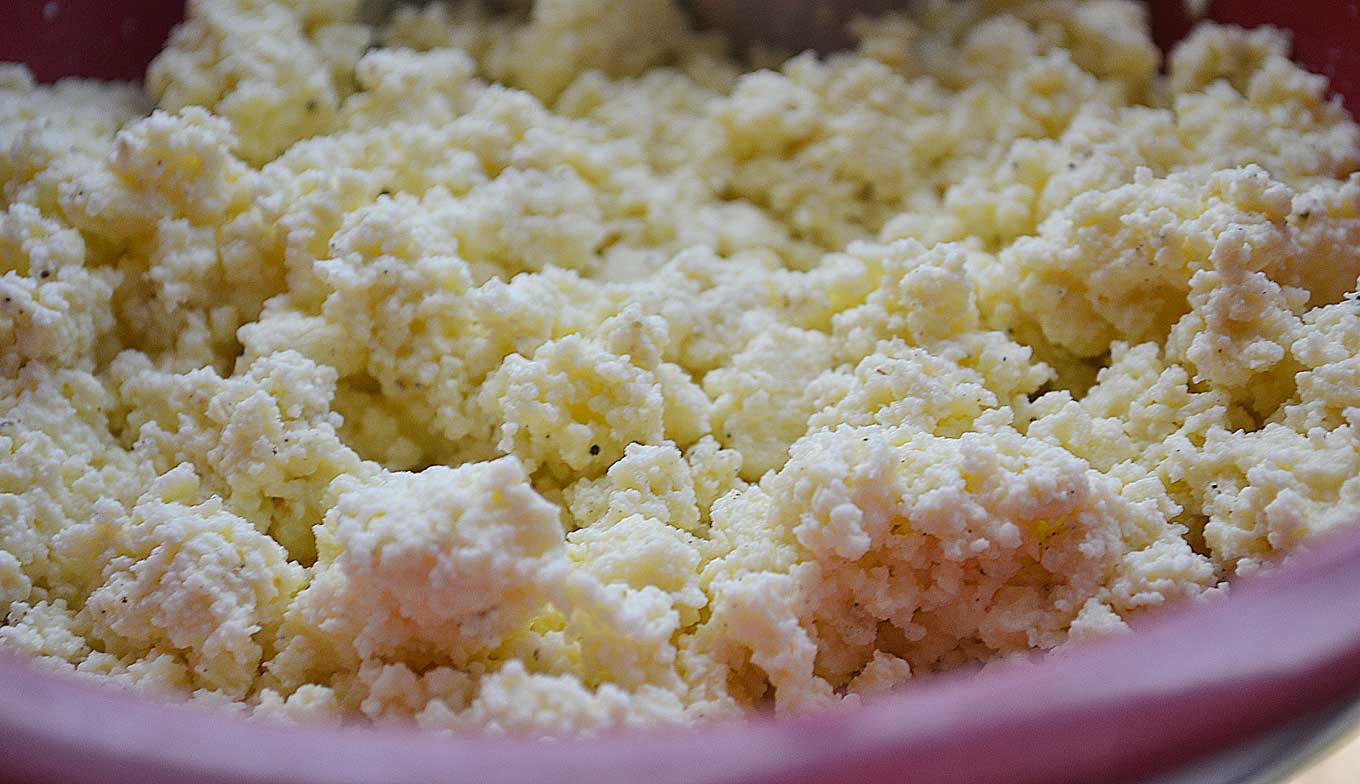
Take out 5 slices of thick-cut, hickory smoked bacon (6-8 oz. or 200 gr.).
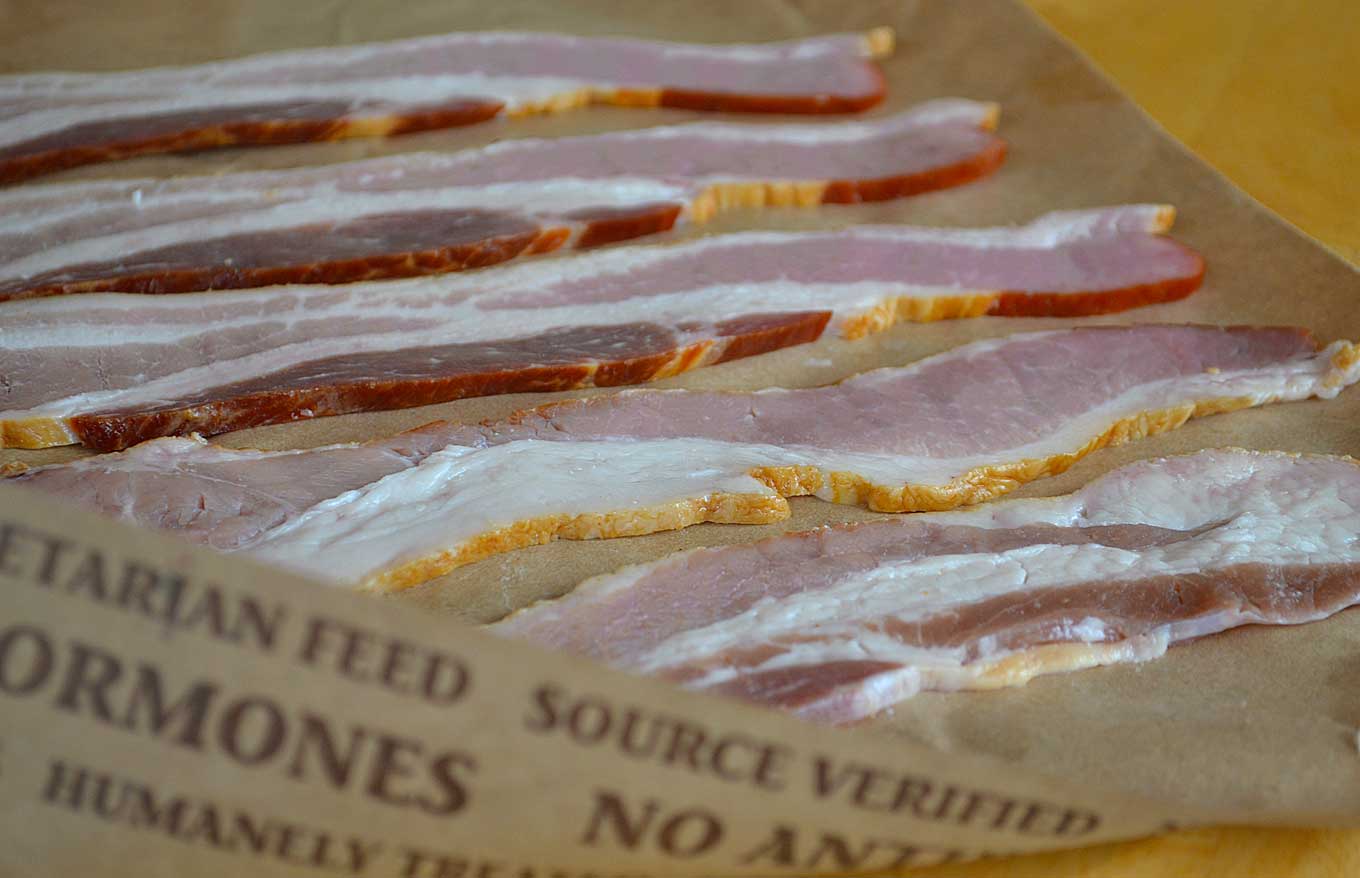
Chop them in ½-inch bits.
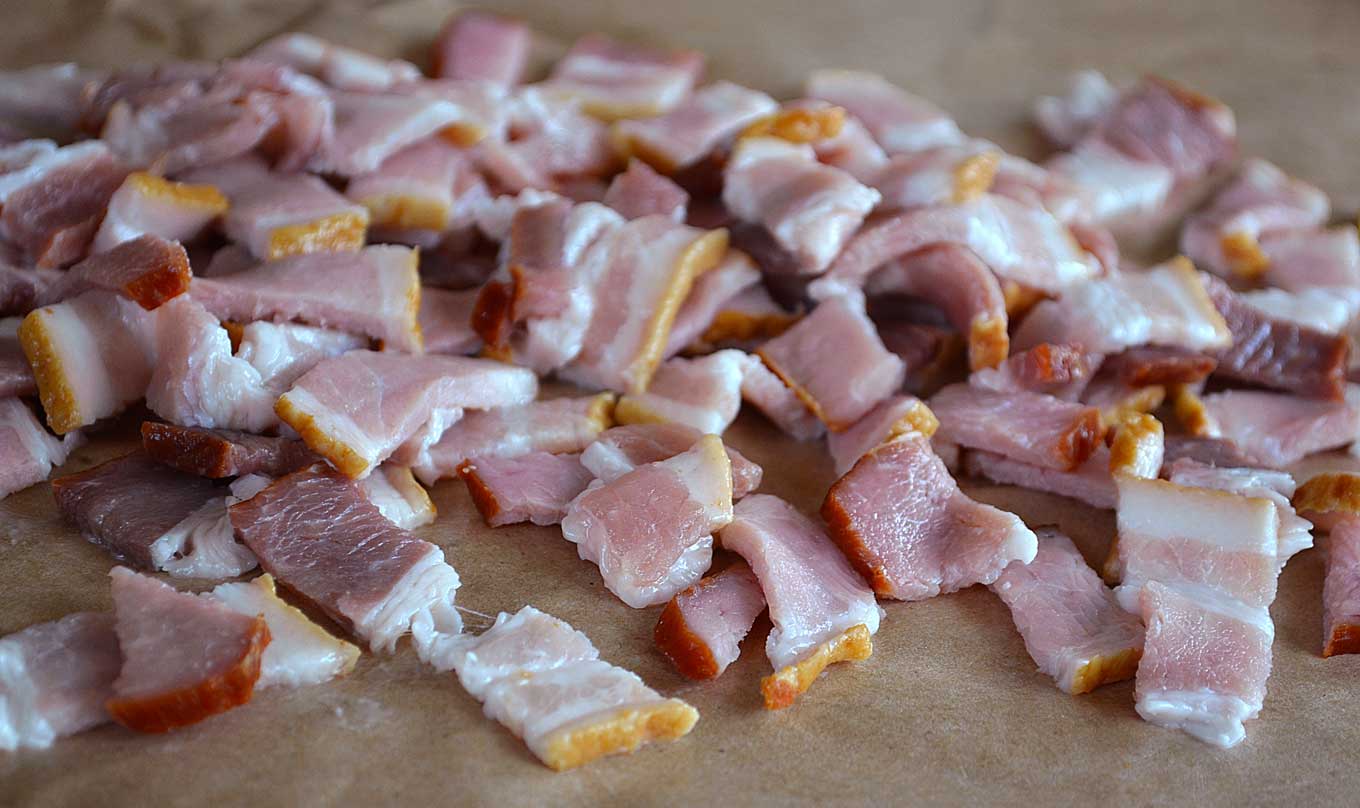
Cook them in 3 tablespoons of olive oil in a 10-inch skillet until their fat has rendered, or until the gummy white fat melts into grease.
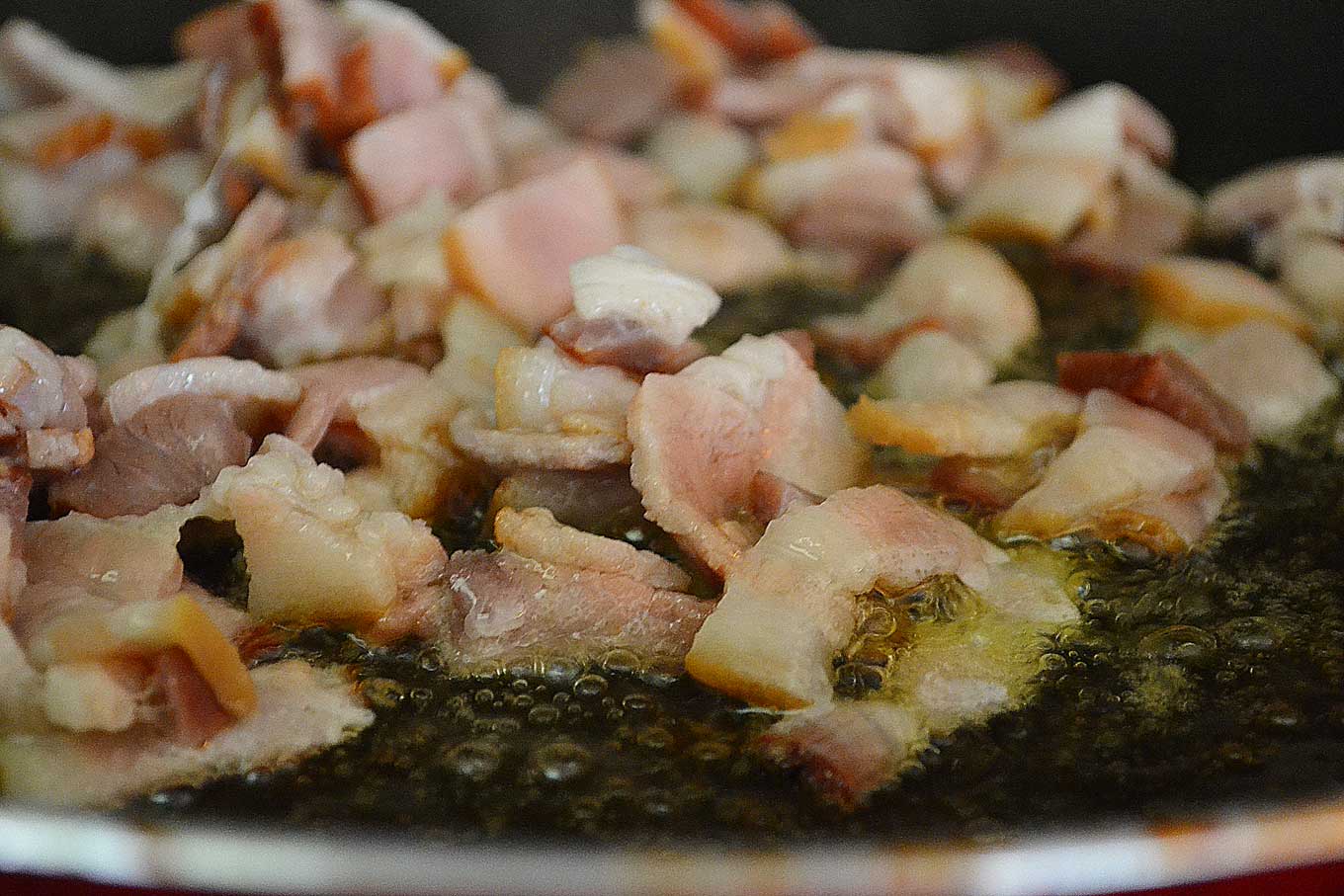
When it is fully cooked, the rest of the bacon will be crisp and have a dark caramel-ly color. Pour it into the pot with the pasta and ricotta and mix well once more. Taste for seasoning. Some ricotta is saltier then others and we want to make sure all the flavors pop in your mouth. If they don’t, add just a little more salt. I usually don’t need to add much since the bacon and the Parmigiano-Reggiano or Pecorino, which we will sprinkle on the pasta, are already salty.
Sprinkle with generous amounts of black pepper and a generous sprinkling of Parmigiano-Reggiano or Pecorino cheese. Makes 4 abundant main servings and 6-8 first course servings.
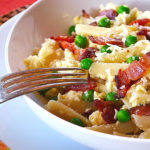



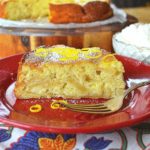
Leave a Reply